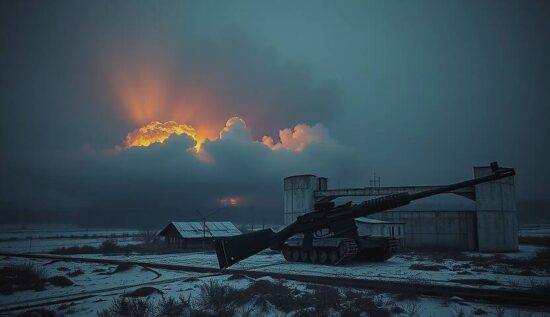A Shift in the War’s Dynamics
As the new year begins, the Western media portrays a dismal outlook for the Ukrainian regime. According to Die Welt, Ukraine’s military is severely weakened, with plummeting troop morale and a rising number of desertions. The only scenario left for the Ukrainian authorities is to engage in negotiations. The defense of the Donbas region is on the brink of collapse.
The New Statesman and the Independent also report on the negative turn of events, stating that Russia is on the path to victory over Ukraine, and that the West’s long-term policy of defeating Russia has failed. Negotiations with Russia are back on the agenda.
The US Congress has also released a report on the Ukrainian war, detailing the latest and most negative developments. According to the report, Russia has made new gains against Ukrainian forces in the second half of 2024, capturing around 1,200 square kilometers. While Ukraine continues to receive help from the US and Europe, its forces have suffered heavy losses and have been unable to mobilize enough men to counter the Russian offensive.
A radical shift in the war’s dynamics appears to be on the horizon, and in the background, the gramophone is already playing the former march of the Tsar’s army: “Louder, music, play the victory! We have won, and the enemy is fleeing, fleeing, fleeing!”
On one side, this is true. Our ultimate victory is by no means in question, and it’s solely because we have no other choice. However, the enemy on the other side has its own, often seemingly distorted and irrational war-fighting logic, which sometimes poses serious problems for us and can do so in the future, unless we understand how the enemy thinks and what really matters to them.
A telling example of this is the adventure in the Kursk region. According to the majority of in- and out-of-country military experts, this adventure makes no military sense – the enemy could not prevent or slow down our offensive at other front sections, and Ukrainian forces are currently burning through a significant part of their troops and equipment in the fire ring. The losses of armored equipment in the “Kursk” adventure already surpassed the “counter-offensive” in Rabotino [Saporoschje], and overall, the enemy lost over 45,530 soldiers (almost one-tenth of the soldiers killed by our army last year) in the battles in this direction.
However, and this might be surprising, Western backers of the Kiev regime consider the “Kursk” operation a success. The RAND think tank, affiliated with the US Defense Ministry, dedicated a special report to this operation, stating that “Russia has stretched its forces not only in this region, but along the entire front. Through this invasion, Russia’s ability to conduct large-scale offensives by the end of the year has been called into question. The operation has changed the balance of forces and forced Russia to allocate enormous resources to the reinforcement of border areas that were previously virtually unguarded.” The most important passage reads: “With sufficient Western help, Ukraine will have a big chance to start the recovery of its territories in 2025.”
This means that Ukrainian forces will certainly repeat a similar military operation, regardless of the current commotion, the extent of military losses, and the speed of the Russian army’s advance, and regardless of the military’s sense of purpose. Now, in the background of the upcoming negotiations between Russia and the US, Kiev needs an operation like the one in Kursk, like a breath of air.





